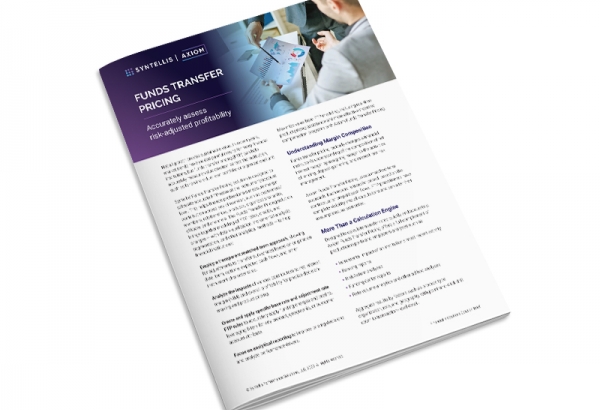It’s no secret that even before the COVID-19 pandemic, the rate environment made it difficult for banks and other financial institutions to increase profitability.
Any significant improvement appears unlikely in 2021 amid the unknown long-term effects of the virus, unemployment levels growing at unprecedented numbers, and — due to many factors — a struggling economy. The possibility that the yield curve could flatten (again) isn’t the only problem, as we are in a volatile economy moving in unknown directions.
No longer can banks and other financial institutions rely solely on the spread between the interest paid on deposits and the interest collected from loans to deliver profitability and growth. They must find alternative strategies.To weather the challenging rate environment, many institutions perform “below the margin” assessments of how to lower operating costs, increase fees, and reduce tax exposure and non-interest expenses. Unfortunately, saving your way to profitability is not a long-term strategy.
Banks can better manage their portfolios by understanding and maximizing value of the institution’s relationships with its clients, and they already possess the data that makes this possible. Unfortunately, most institutions struggle to leverage this valuable information.
According to Syntellis’ 2021 Financial Institutions Finance and Technology Trends report, only 28% of institutions clearly understand profitability based on measurement and analysis, and they believe customer (81%) and relationship (77%) profitability are the most important dimensions to monitor. Meanwhile, 72% of financial institutions don’t leverage this valuable data effectively, either because they have gaps in their understanding of profitability analytics and reporting (42%), or they simply haven’t ventured far with profitability analytics (30%).
Industry studies show that the greatest value to overall profitability is derived from the top 1% of an institution’s client base, and profitability insights can help institutions sell additional products to these clients and take advantage of their influence on others to further expand opportunities and mitigate the effects of a difficult rate environment.
Gaining a full understanding of each relationship's scope and value (including the risks the institution faces if the client becomes unhappy), is now much easier with the introduction of technology that can support effective portfolio management by quickly parsing through institutional data to rank each relationship, from most profitable to least. Armed with this information, executives can develop products and strategies appropriate to their profitability levels to gain a greater wallet share.
For example, analysis may show that you have some relationships with a high volume of deposits, but profitability is low. Upon investigation, you find one client is on the board of a medical clinic, but the clinic has only a business checking account with your institution. There may be a cross-sell opportunity with higher-profitability instruments: perhaps the clinic needs an operating line of credit or new commercial real estate loan. Understanding the profitability of the current relationship and layering on potential new business can, if priced correctly, improve performance and boost relationship “stickiness.”
A greater understanding of relationship profitability can also help relationship managers price new business. You may offer a high-value client with a great deal of influence a loan at 3.50% rather than 3.75% to maintain satisfaction, particularly if it will lead to other higher-value opportunities. To ensure the total relationship remains profitable, consider offsetting a rate concession by requiring additional deposits. This strategy helps avoid competing on price alone and empowers the relationship manager to meet profitability hurdle rates while offering multiple options to the client — a win-win.
Of course, this approach doesn’t mean lower-value clients should be ignored. For these clients, exploring cross-sell opportunities with high-value products or replacing maturing accounts with more attractive terms may be appropriate.
To derive the full benefits of relationship management, however, the institution must look beyond core relationships and present considerations by building a robust calculation and modeling engine that considers both historic and future profitability. This model should use funds transfer pricing (FTP) to gain the most accurate view of exactly who and what are driving that profitability.
First, you should perform FTP (and overall profitability analysis) at the account level. Once you understand the value of each individual account, aggregate data to accurately measure profitability across not only specific accounts, but also for individual customers, products, relationships, or even loan officers. By rolling up the account information in different ways, you’ll identify your best opportunities to improve margin.
The tools for this type of in-depth relationship analysis exist, although 67% of respondents to the aforementioned survey said they lack an automated means to analyze the profitability of complex relationships. Investing in these tools and processes delivers the capabilities described above and lets management tie incentive compensation to relationship profitability — aligning individual and institutional goals.
In the current hyper-competitive market that is being adversely affected by the coronavirus, traditional methods of supplementing income — such as raising fees for early withdrawals and late payments — could lead to long-term damage to the institution’s reputation with repercussions long after net interest margin improves. The better approach is to gain an in-depth understanding of every account and relationship, nurturing each as appropriate to increase revenue while delivering exceptional client service.
Your peers also browsed these resources...

2021 Financial Institutions Finance and Technology Trends

Actionable data to guide decision-making: 10x as many reports with the same staff


